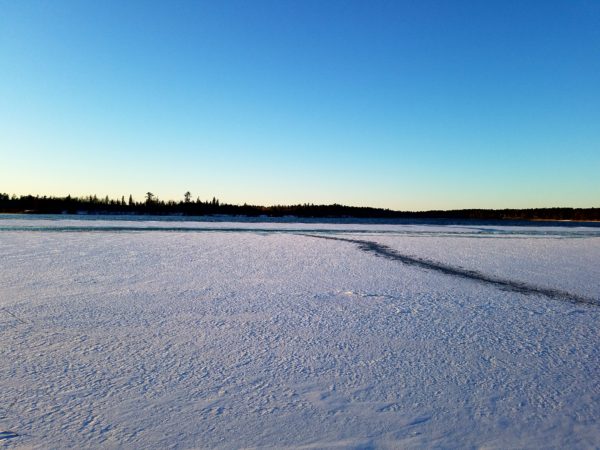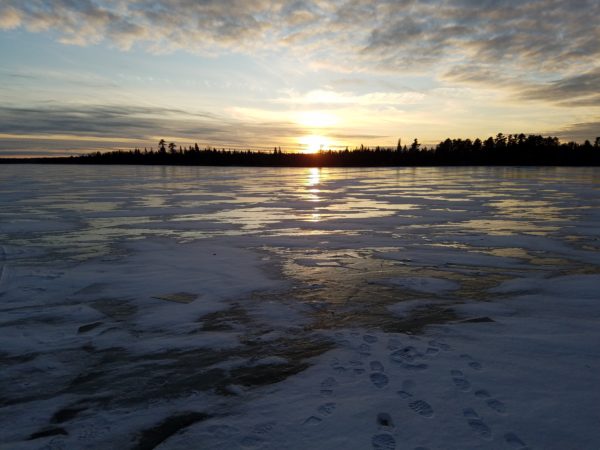TORONTO, Nov. 18, 2020 – As winters become milder and lake ice less stable, more children and young adults are falling through the ice and fatally drowning, say York University researchers.
A new study, which looked at 4,000 drownings in 10 countries, including Canada, Russia, Finland, Germany, Sweden, and the United States, found warming winter air temperatures were a good predictor of the number of drownings. The research examined several decades of data, including 30 years worth for each province and territory in Canada.
For some countries, the number of winter drownings through ice represented 15 to 50 per cent of the total annual number of drownings. Canada had the highest number of winter drownings and the territories, where people use frozen lakes more for their livelihood, such as hunting and fishing, had the highest number of drownings per capita in all of the regions analyzed in 10 countries.
“The time when the risk of drowning is greatest is at the beginning and the end of winter, which also corresponds to the weakest ice, when it is less stable and less thick,” says lead researcher Associate Professor Sapna Sharma of the Faculty of Science, who worked with Postdoctoral Fellows Kevin Blagrave and Simon Watson, former PhD student Tessa Clemens, and an international group of scientists.
“In this study, we also looked at who was drowning, when, and what kind of activities they were doing at the time,” says Sharma. “Almost 50 per cent of drowning victims are children less than nine years old playing on the ice, while the majority of victims drowning while in vehicles, such as snowmobiles, are young adults less than 24 years old.”
The complex nature of changing winters – warming temperatures, rain on snow, and freeze-thaw events – is destabilizing the ice on freshwater lakes and rivers in countries across the Northern Hemisphere.

By Lesley Knoll, University of Minnesota
When winter air temperatures reached between −10 C and −5 C, drownings rose substantially. Once winter air temperatures closed in on 0 C, the number of drowning was up to five times higher than usual. Once air temperatures reached 0 C or higher, the number of drownings fell drastically, likely because the ice was visibly unsafe or non-existent.
The researchers gathered drowning records from coroners’ offices, police stations and lifesaving societies around the world, including the Lifesaving Society Canada. They also collected temperature and precipitation data for each month and area for each drowning using the data from the University of East Anglia’s Climatic Research Unit and collected population data from across Canada, Estonia, Germany, Latvia, Finland, Russia and Sweden, for regions of Italy and Japan, and from 14 states in the U.S.
“Because we also examine trends in lake ice over hundreds of years, we know that ice on is much later in the season and ice off is much earlier. We are seeing these trends in lakes and rivers across the Northern Hemisphere and we found that the highest number of drowning events correspond to these times of ice-off and ice-on,” says Sharma. “Lake ice is important as we have strong traditions for going out on the ice to skate or ice fish, and for some, it’s important for survival, such as through the construction of ice roads in northern communities that are the only way to get resources in the winter.”

By Lesley Knoll, University of Minnesota
The researchers found, however, that in those countries that have strong regulations about who can go on the ice, when, and for what activity, such as Italy and Germany, they have low incidences of winter drownings. Sharma suggests incorporating winter ice safety in swimming lessons for children.
“The climate is changing and it’s affecting when you can be on the ice safely. Individuals need to take that into account, especially this winter when more individuals will be out enjoying winter ice activities,” says Sharma. “Times have changed, and climate has changed. Winters are among the fastest warming season, especially in Northern countries, and we’re seeing the impacts of that on our lakes, and it’s also contributing to tragedies each winter.”
The paper, “Increased winter drownings in ice-covered regions with warmer winters,” was published today (Nov. 18) in the journal PLOS One.
-30-
York University champions new ways of thinking that drive teaching and research excellence. Our students receive the education they need to create big ideas that make an impact on the world. Meaningful and sometimes unexpected careers result from cross-disciplinary programming, innovative course design and diverse experiential learning opportunities. York students and graduates push limits, achieve goals and find solutions to the world’s most pressing social challenges, empowered by a strong community that opens minds. York U is an internationally recognized research university – our 11 faculties and 25 research centres have partnerships with 200+ leading universities worldwide. Located in Toronto, York is the third largest university in Canada, with a strong community of 53,000 students, 7,000 faculty and administrative staff, and more than 300,000 alumni. York U's fully bilingual Glendon Campus is home to Southern Ontario's Centre of Excellence for French Language and Bilingual Postsecondary Education.
Media Contact:
Sandra McLean, York University Media Relations, 416-272-6317, sandramc@yorku.ca

